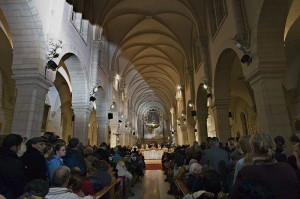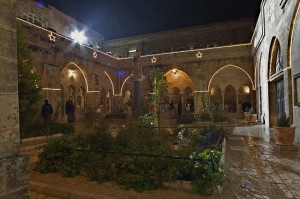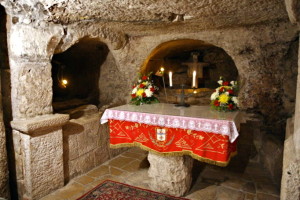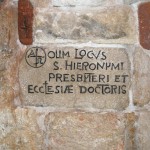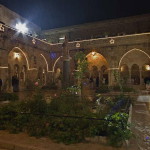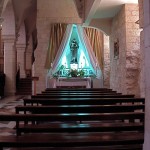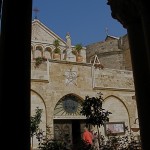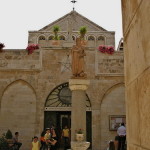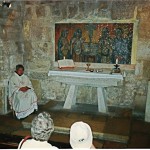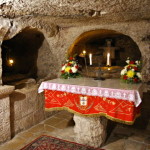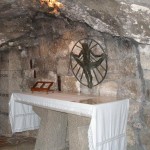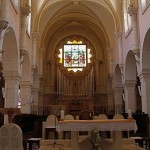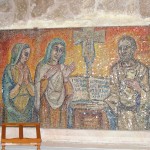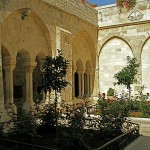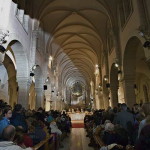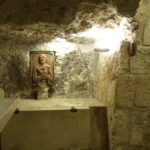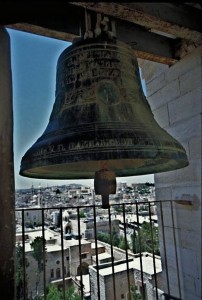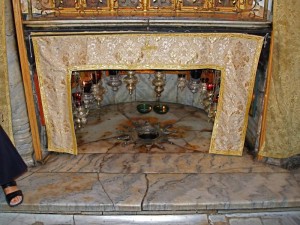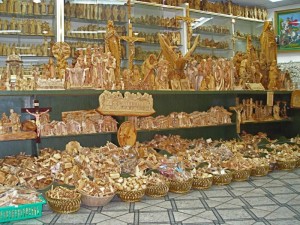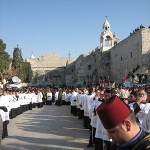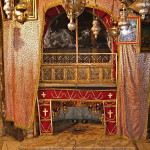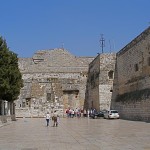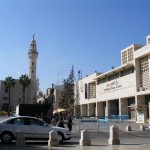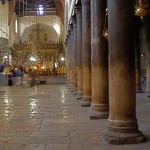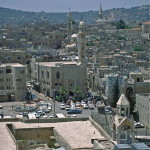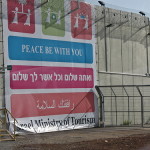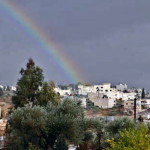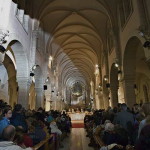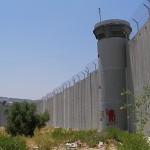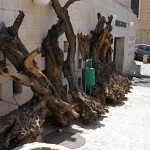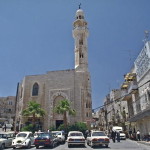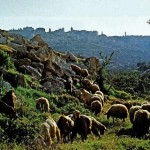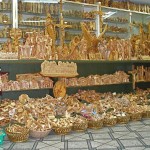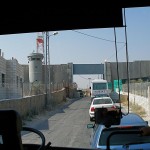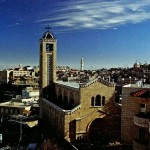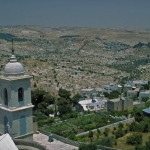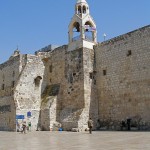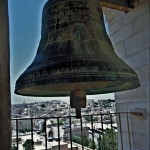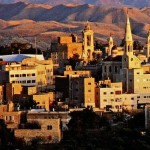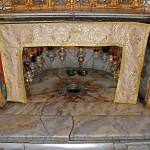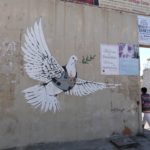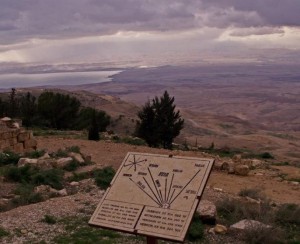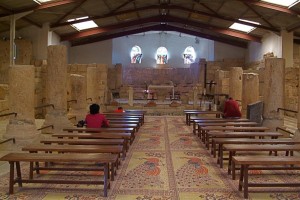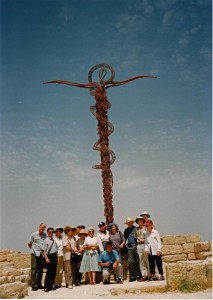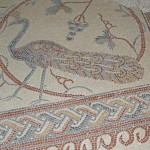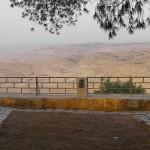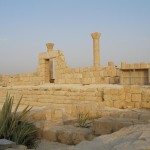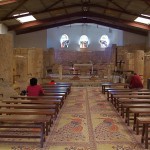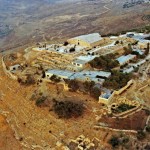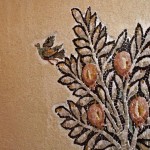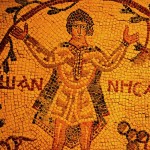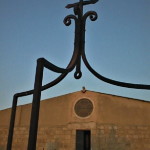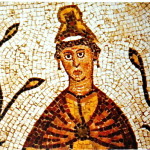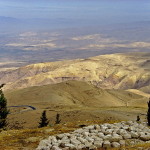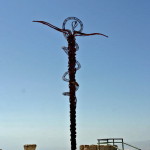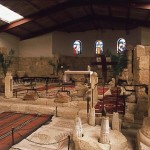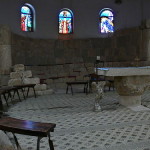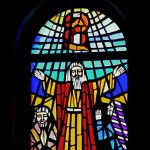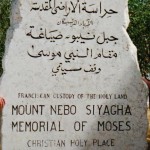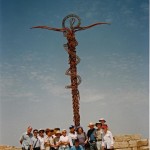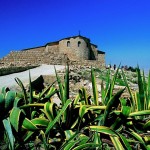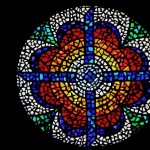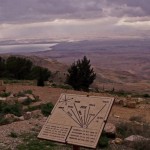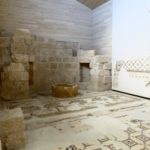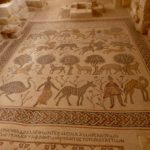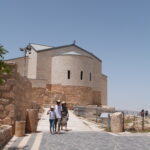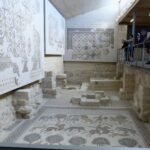West Bank
The midnight Mass beamed from Bethlehem to television viewers worldwide on Christmas Eve is celebrated in the Church of St Catherine of Alexandria.
This 19th-century church adjoins the 6th-century Church of the Nativity, built over the cave where Jesus was born. It even shares a wall with the Nativity church.
The Church of St Catherine is the parish church for Bethlehem’s Catholics. It is also often used by groups of pilgrims.
Martyr broke torture wheel
And who was St Catherine of Alexandria? Though she has been widely venerated in both East and West, there are few reliable facts about her life.
According to the traditional story, this early 4th-century martyr from Egypt was of noble birth and well educated. At the age of 18, she challenged the emperor Maxentius (or his father, the emperor Maximian) for persecuting Christians and worshipping false gods.
The enraged emperor ordered her to be tortured on a wheel — hence the term “Catherine wheel”. But when Catherine touched the wheel, it broke. She was then beheaded and tradition says angels carried her body to Mount Sinai, where in the 6th century a church and monastery were built in her honour.
This latter part of the story was, however, unknown to the earliest pilgrims to the mountain. It was two or three centuries later that the story of St Catherine and the angels began to circulate.
St Catherine of Alexandria has been ranked with St Margaret and St Barbara as one of the 14 “most helpful” saints in heaven. She is also one of the saints reputed to have spoken to St Joan of Arc.
Complex of caves under church
The Bethlehem church dedicated to St Catherine was built in 1882 on the ruins of the Crusader church and monastery belonging to the Augustinians. Beneath the paving of the cloister are the foundations of an earlier monastery, possibly that of St Jerome (whose statue stands on a pedestal in the cloister).
A door in the southwest corner of the cloister leads to a Crusader chapel. The chapel walls are decorated with remnants of Crusader wall paintings, which were partially restored in 1950.
A narrow stairway on the right hand side of the nave leads down into a complex of caves and rock-cut chambers.
These contain a number of chapels. They include the Cave of St Jerome, who translated the Vulgate version of the Bible; St Joseph’s Chapel, recalling the dream in which an angel warned Joseph to take the Holy Family to Egypt; and the Chapel of the Holy Innocents, commemorating the children massacred by Herod.
Other sites in the Bethlehem area:
In Scripture:
An angel warns Joseph: Matthew 2:13-15
Massacre of the Holy Innocents: Matthew 2:16-18
Administered by: Franciscan Custody of the Holy Land
Tel.: 972-2-2742425
Open: Apr-Sep 6am-7.30pm, Oct-Mar 5.30am-5pm (grottos closed on Sunday mornings)
- “Once the place of St Jerome, priest and doctor of the Church” (Seetheholyland.net)
- Christmas lighting in the courtyard of St Catherine’s Church (© Custodia Terrae Sanctae)
- St Anthony’s chapel in St Catherine’s Church (Seetheholyland.net)
- Main door of St Catherine’s Church (Seetheholyland.net)
- Entrance to St Catherine’s Church (James Emery)
- Chapel in St Jerome’s Cave under Church of St Catherine (Seetheholyland.net)
- Chapel of the Holy Innocents under St Catherine’s Church (© Custodia Terrae Sanctae)
- Chapel of St Joseph under St Catherine’s Church (Seetheholyland.net)
- Main altar in Church of St Catherine (Seetheholyland.net)
- Mosaic over altar in St Jerome’s chapel (Seetheholyland.net)
- Courtyard and cloisters of St Catherine’s Church (Seetheholyland.net)
- Interior of Church of St Catherine (Seetheholyland.net)
- Christmas Midnight Mass in St Catherine’s Church (© Custodia Terrae Sanctae)
- Bas-relief of St Jerome over the place where his body lay before it was transferred to a church in Rome (Seetheholyland.net)
References:
Doyle, Stephen: The Pilgrim’s New Guide to the Holy Land (Liturgical Press, 1990)
Freeman-Grenville, G. S. P.: The Holy Land: A Pilgrim’s Guide to Israel, Jordan and the Sinai (Continuum Publishing, 1996)
Gonen, Rivka: Biblical Holy Places: An illustrated guide (Collier Macmillan, 1987)
Inman, Nick, and McDonald, Ferdie (eds): Jerusalem & the Holy Land (Eyewitness Travel Guide, Dorling Kindersley, 2007)
Wareham, Norman, and Gill, Jill: Every Pilgrim’s Guide to the Holy Land (Canterbury Press, 1996)
External links

